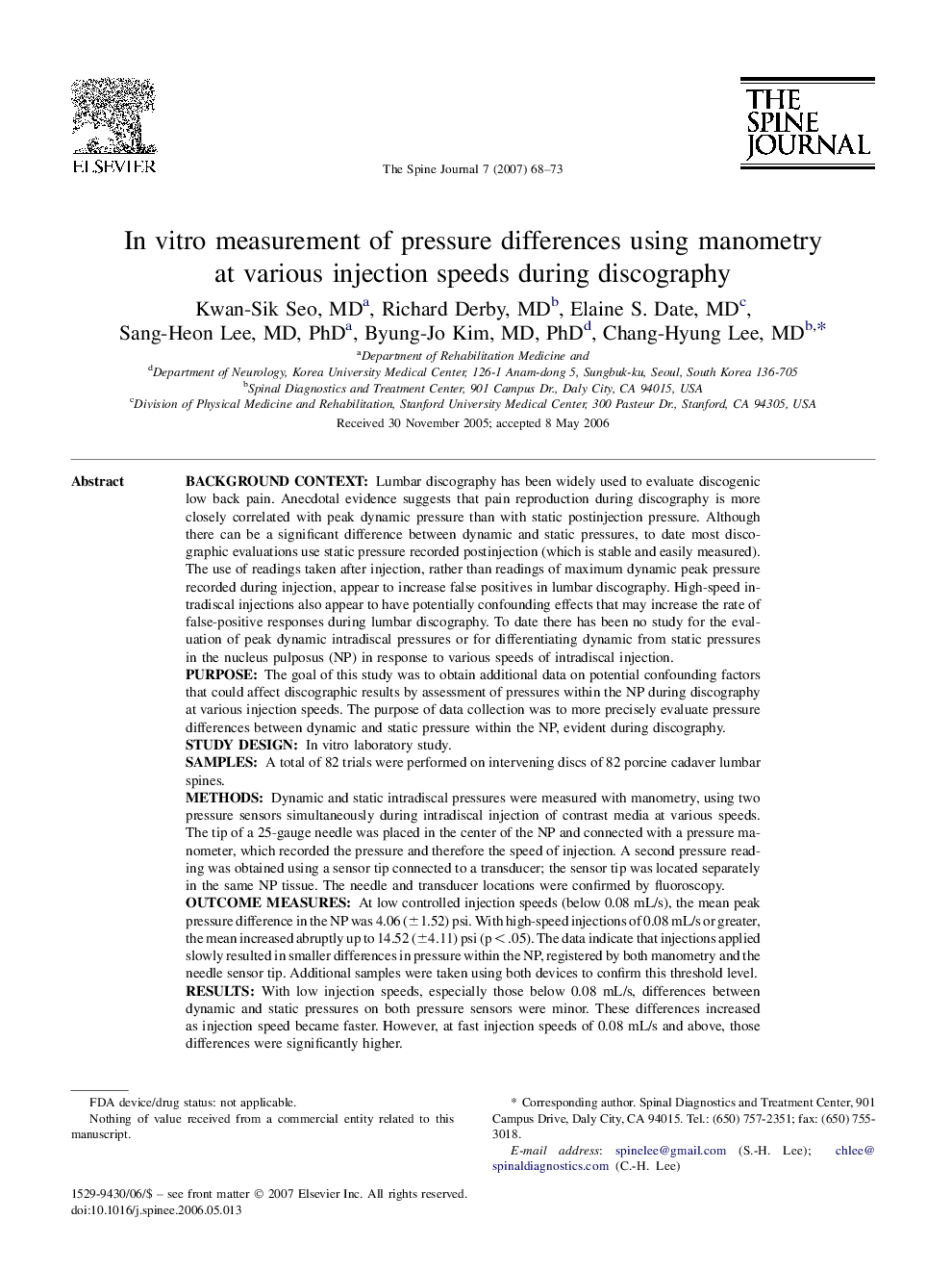| Article ID | Journal | Published Year | Pages | File Type |
|---|---|---|---|---|
| 4100225 | The Spine Journal | 2007 | 6 Pages |
Background contextLumbar discography has been widely used to evaluate discogenic low back pain. Anecdotal evidence suggests that pain reproduction during discography is more closely correlated with peak dynamic pressure than with static postinjection pressure. Although there can be a significant difference between dynamic and static pressures, to date most discographic evaluations use static pressure recorded postinjection (which is stable and easily measured). The use of readings taken after injection, rather than readings of maximum dynamic peak pressure recorded during injection, appear to increase false positives in lumbar discography. High-speed intradiscal injections also appear to have potentially confounding effects that may increase the rate of false-positive responses during lumbar discography. To date there has been no study for the evaluation of peak dynamic intradiscal pressures or for differentiating dynamic from static pressures in the nucleus pulposus (NP) in response to various speeds of intradiscal injection.PurposeThe goal of this study was to obtain additional data on potential confounding factors that could affect discographic results by assessment of pressures within the NP during discography at various injection speeds. The purpose of data collection was to more precisely evaluate pressure differences between dynamic and static pressure within the NP, evident during discography.Study designIn vitro laboratory study.SamplesA total of 82 trials were performed on intervening discs of 82 porcine cadaver lumbar spines.MethodsDynamic and static intradiscal pressures were measured with manometry, using two pressure sensors simultaneously during intradiscal injection of contrast media at various speeds. The tip of a 25-gauge needle was placed in the center of the NP and connected with a pressure manometer, which recorded the pressure and therefore the speed of injection. A second pressure reading was obtained using a sensor tip connected to a transducer; the sensor tip was located separately in the same NP tissue. The needle and transducer locations were confirmed by fluoroscopy.Outcome measuresAt low controlled injection speeds (below 0.08 mL/s), the mean peak pressure difference in the NP was 4.06 (±1.52) psi. With high-speed injections of 0.08 mL/s or greater, the mean increased abruptly up to 14.52 (±4.11) psi (p<.05). The data indicate that injections applied slowly resulted in smaller differences in pressure within the NP, registered by both manometry and the needle sensor tip. Additional samples were taken using both devices to confirm this threshold level.ResultsWith low injection speeds, especially those below 0.08 mL/s, differences between dynamic and static pressures on both pressure sensors were minor. These differences increased as injection speed became faster. However, at fast injection speeds of 0.08 mL/s and above, those differences were significantly higher.ConclusionDynamic and static intradiscal pressures are of similar value when measured by manometer and by needle sensor at slow injection speeds during discography. However, the pressure differences appeared to rapidly increase in response to incremental increases in injection speed. The data from these 82 samples suggest that uncontrolled high speeds of intradiscal injections are a potential confounding factor, which may increase false-positive responses during lumbar discography.
